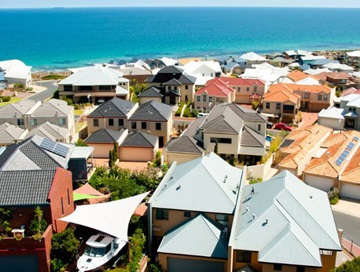Electric or gas heating: Which is the best way to keep warm in Winter?
29 June 2023"We’ve done the research, and don’t worry, we’re not going to tell you to “put another layer on” like your parents did when you were a child."
.tmb-newsdetail.jpg?sfvrsn=8e8bbd30_1)
With the temperature plummeting to below zero this week, it’s getting harder to get out of bed each morning.
And with the rising cost of living, it’s becoming increasingly challenging to maintain an adequately heated home, while striking the balance between affordability and sustainability.
So, what is the best way to keep warm during the Winter months?
We’ve done the research, and don’t worry, we’re not going to tell you to “put another layer on” like your parents did when you were a child.
What options are there?
When it comes to heating your home, there are two main choices: gas and electricity.
Gas heating, commonly fuelled by natural gas or LPG, is popular due to its efficiency and affordability. Gas heaters provide instant warmth and are suitable for both large and small spaces. They come in the form of stunning gas-log fireplaces, radiator heaters and small portable heaters.
Electric heating offers convenience and versatility. There are a range of choices including central heating, split reverse-cycle air-conditioning, portable heaters and underfloor heating.
What does it all cost?
Heating is the largest contributor to household consumption costs, accounting for about 40 per cent of energy use.
While gas has previously been the most cost-effective way to heat your home, with rising gas prices, electricity is now the cheaper alternative.
On an hourly comparison, a reverse cycle air-conditioner is the cheapest option to heat your home, at around 35 cents per hour. When compared to an electric convection heater, this increases to 58 cents per hour, or up to 98 cents per hour for an electric tower heater.
When looking at gas, the cheapest option is a convection heater at approximately 69 cents per hour, or a radiant convection heater at 76 cents per hour.
Over the course of Winter, this could amount to a difference of $227 between the least and most expensive options (based on 4 hours per day for the Winter months).

(Source: finder.com.au)
What about installation?
If you were starting from scratch, a reverse cycle air-conditioner would be the best option due to its lower running and installation costs.
While a typical air-conditioning unit can set you back $600-700 (excluding installation), a gas system can easily be in the thousands, with a small fireplace up to $4,000.
Electric heating also requires minimal maintenance costs when compared to gas and is reported to last up to 50 per cent longer than the average gas heater.
It is worth considering what systems are currently installed in your home, as it may be cheaper to run an existing system than to have it replaced.
Which is the more sustainable option?
In a best-case scenario, if you ran an electric reverse cycle air-conditioner from solar power, you would have the least environmental impact. However, many Australian homes are still run primarily on fossil fuel consumption.
As of June 2023, Australia’s energy generation is dominated by coal at around 75 per cent, followed by gas at 16 per cent, hydro at 5 per cent and wind at 2 per cent.
With the State Government’s recent $2.8 billion commitment to energy storage and wind power generation, the mix of renewable energy and efficient appliances has the ability to make home heating a net-zero activity.
Gas heating is still reported to have less impact on the environment, as burning natural gas currently results in fewer emissions than burning coal or petroleum to produce an equal amount of energy.
If sticking to electric heating, here are some tips to make it more energy efficient:
- Set your temperature between 18°C to 22°C. After this, you can expect a further 10 per cent added to the total cost of your bill for every 1°C you increase.
- Ensure you clean the filters of your unit each month to remove dust and other build up and have your air-conditioner serviced regularly.
- Keep an eye out for credits and discounts. Recently, the WA Government announced a $400 household electricity credit to ease cost of living pressures. Many providers also provide sign-up discounts if you switch plans.
- Consider the size of your home. If you have a large home, you'll need a more powerful heating system, which will likely guzzle more energy to run.
- Turn your appliances off at the wall when not in use to avoid ‘standby’ power being utilised. It is reported this small habit could save you up to $100 per year.
- Think about your insulation. If your home is well-insulated, you'll need less heating, which will save energy in the long run.

.tmb-rcarousel.jpg?sfvrsn=3cb48c0f_1)





.tmb-rcarousel.jpg?sfvrsn=c6c3d87a_1)

